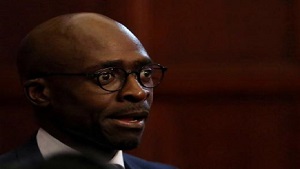The first phase of the #ZumaMustFall campaign can be roughly dated back to the second week of December 2015 following President Zuma’s shock removal of Nhlanhla Nene from the Finance Ministry. During some of the subsequent protests some right-wingers joined marches in their infamous regalia, so that many South Africans were put off. No sooner had #ZumaMustFall Phase One started than it faltered. The quick replacement of Des van Rooyen with Pravin Ghordan, for all its costly untidiness, also took the wind out of the sails of the protesters.
We have now moved into the second phase of the #ZumaMustFall campaign.
Between Nene-Gate and the recent removal of Gordhan a bewildering array of tactics, strategies and counter strategies have been used, both by the detractors of President Zuma and his defenders.
Foundational to the strategies and counter strategies, has been the poor or nonexistent justification for the Treasury reshuffles. Officially, Nene was removed so that he may go and take up a senior position at the BRICS bank. Des van Rooyen was chosen because he was highly qualified. Within three months of his appointment, Pravin Gordhan was facing a set of questions from the HAWKS. The rest is the stuff of legends.
The recent reshuffle has been justified variously – from a dubious intelligence report, to a total breakdown of relations.
Radical economic transformation and a decisive move away from white monopoly capital have been invoked as rationale. Central to the rhetoric of Radical economic transformation is the issue of land repossession while WMC is attacked for its total stranglehold the economy and its total control of all of the state and all of society – the ‘real’ state capture, we are told.
The recent removal of Gordhan, allegedly sends a chill down the spines of white monopoly capitalists and their sidekicks, the ‘new black capitalist class’. Why? Because the Treasury reshuffle is supposed to be a giant step towards the loosening of the grip of white monopoly capital on state and society, we are told. And yet Treasury has been at pains to suggest that there will be no change of fiscal and financial policy. On that basis, the new minister Malusi Gigaba and his advisors will soon go abroad to speak to investors.
Here is the rub: In what ways can it be demonstrated that during his tenure as president, Jacob Zuma has been a champion of white monopoly capital and a notable campaigner against white monopoly capital? How have the 783 counts of corruption charges, the Nkandla Constitutional Court ruling, the allegations of Gupta influence on cabinet appointments, assisted Zuma’s performance as a radical economic transformer, a crusader against white monopoly capital and as a president who abides but the country’s constitution?
The strategy of a few marches, even by hundreds of thousands of people, will not remove Zuma from the presidency. Nor will a few pro-Zuma and pro-Gupta marches keep Zuma in office, in and of themselves.
What will remove Zuma from power, would be if he were to choose to resign or be caused to resign. There are no signs of this happening soon. Can the ANC NEC would do unto Zuma as they did unto Mbeki in 2008, namely, recall him? This is a remote possibility given the current balance of forces within the NEC, not to speak of the many factions within the ANC.
Can there be a successful vote of no confidence against Zuma in parliament as prescribed by the constitution? Most unlikely. The relevant ANC structures have already moved into defensive formation around this possibility. Any wonder the UDM has gone to court to try and obtain a secret ballot vote? Even if the vote was to be secret, it is doubtful whether ANC members of parliament can be persuaded or shamed by the opposition into supporting a vote of no confidence.
The fact of the matter is that; at this point in our electoral cycle, there are only two entities that can remove Zuma; namely, Zuma himself or the ANC.
Can the marches influence these two entities? Indications are that Zuma is not about to step aside. Both the ANC parliamentary caucus leadership and its recent NWC have ruled out the possibility of Zuma being removed.
So is the UDM court bid in vain? Not really. Are the marches of no use? Of course not. We have made progress since #ZumaMustFall phase one. We are now discussing the secret ballot! The size, spread and frequency of the marches have also grown substantially. Through these marches, the electioneering for 2019 has started in earnest. Ultimately, it is the electorate that chooses the ruling party/parties and the President.
Professor Tinyiko Maluleke is Political Analyst based at the University of Pretoria. Opinions, beliefs and viewpoints expressed in this article are that of the author and NOT of the SABC













